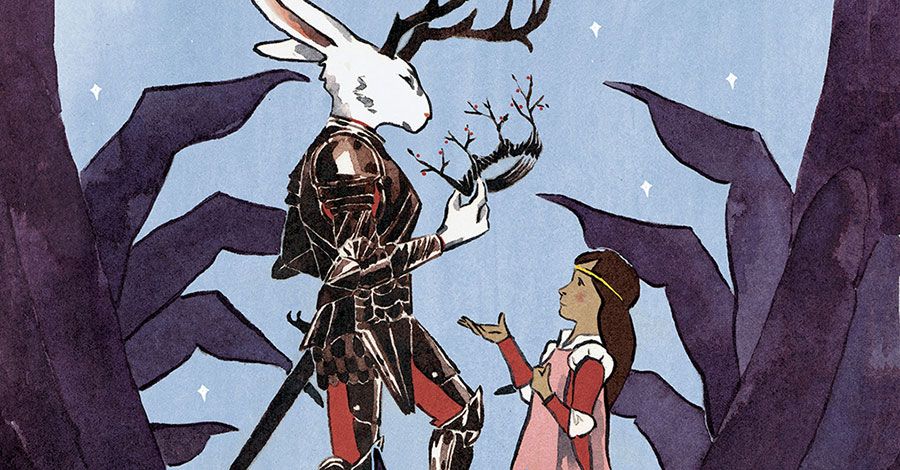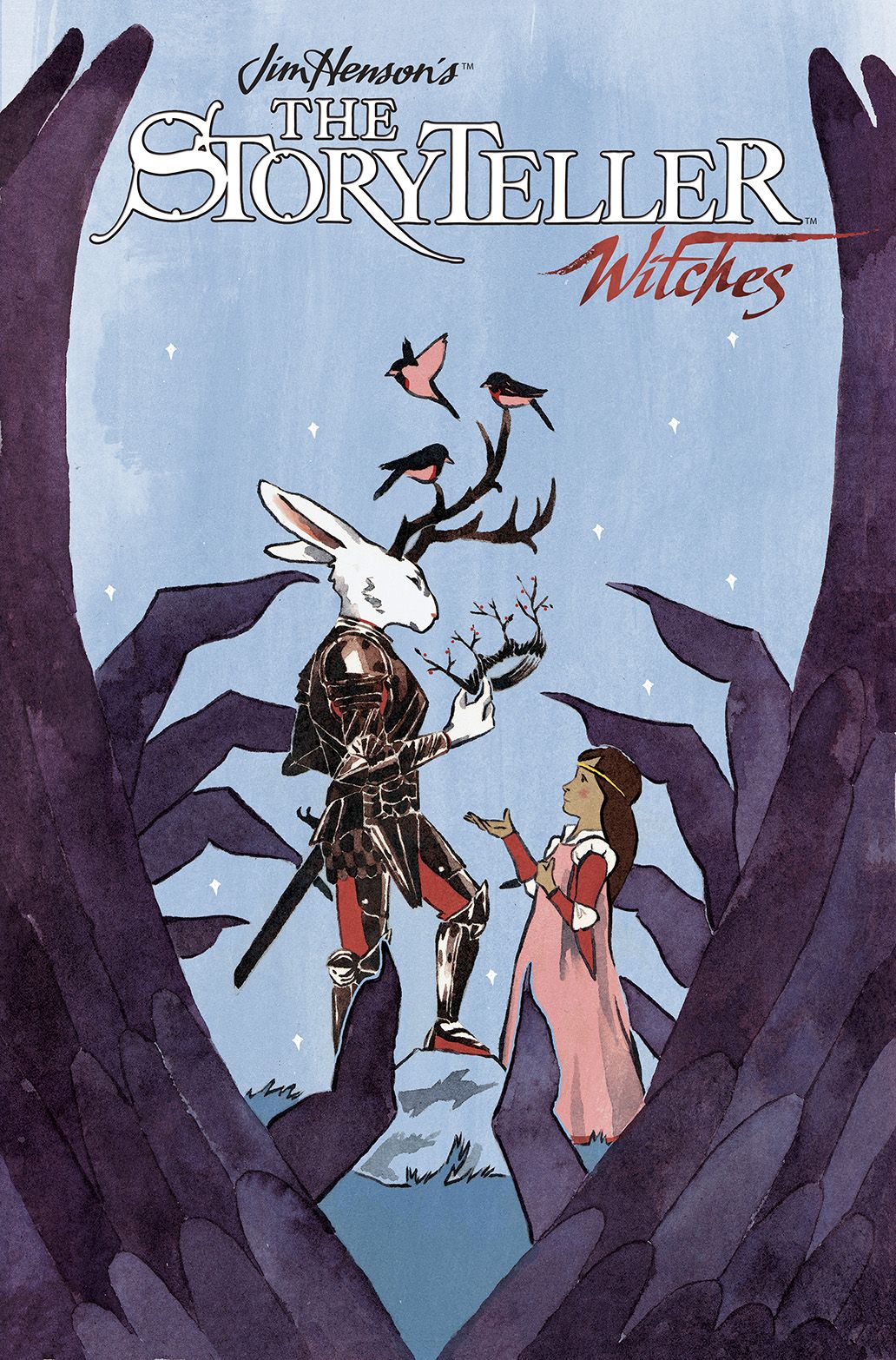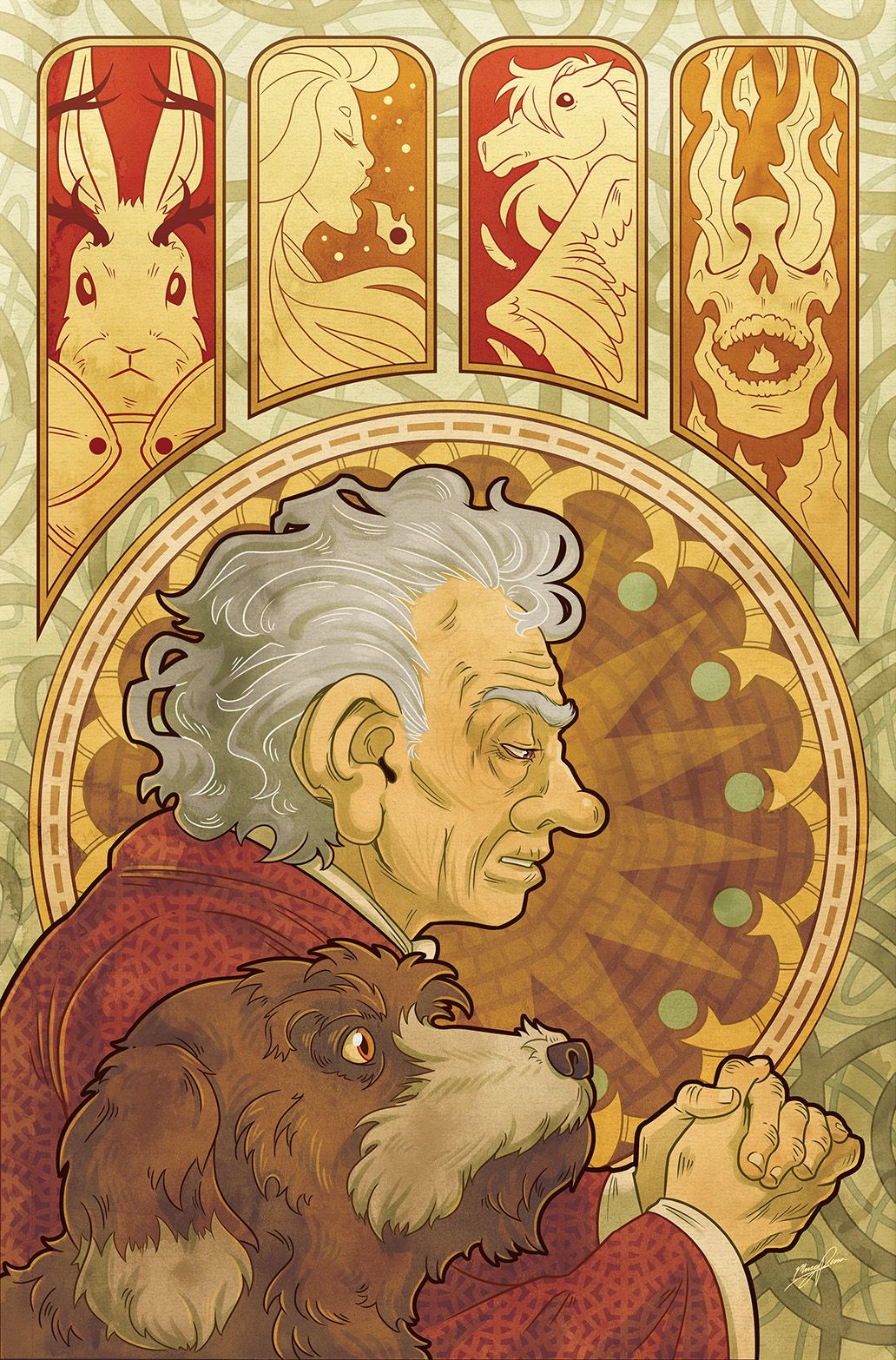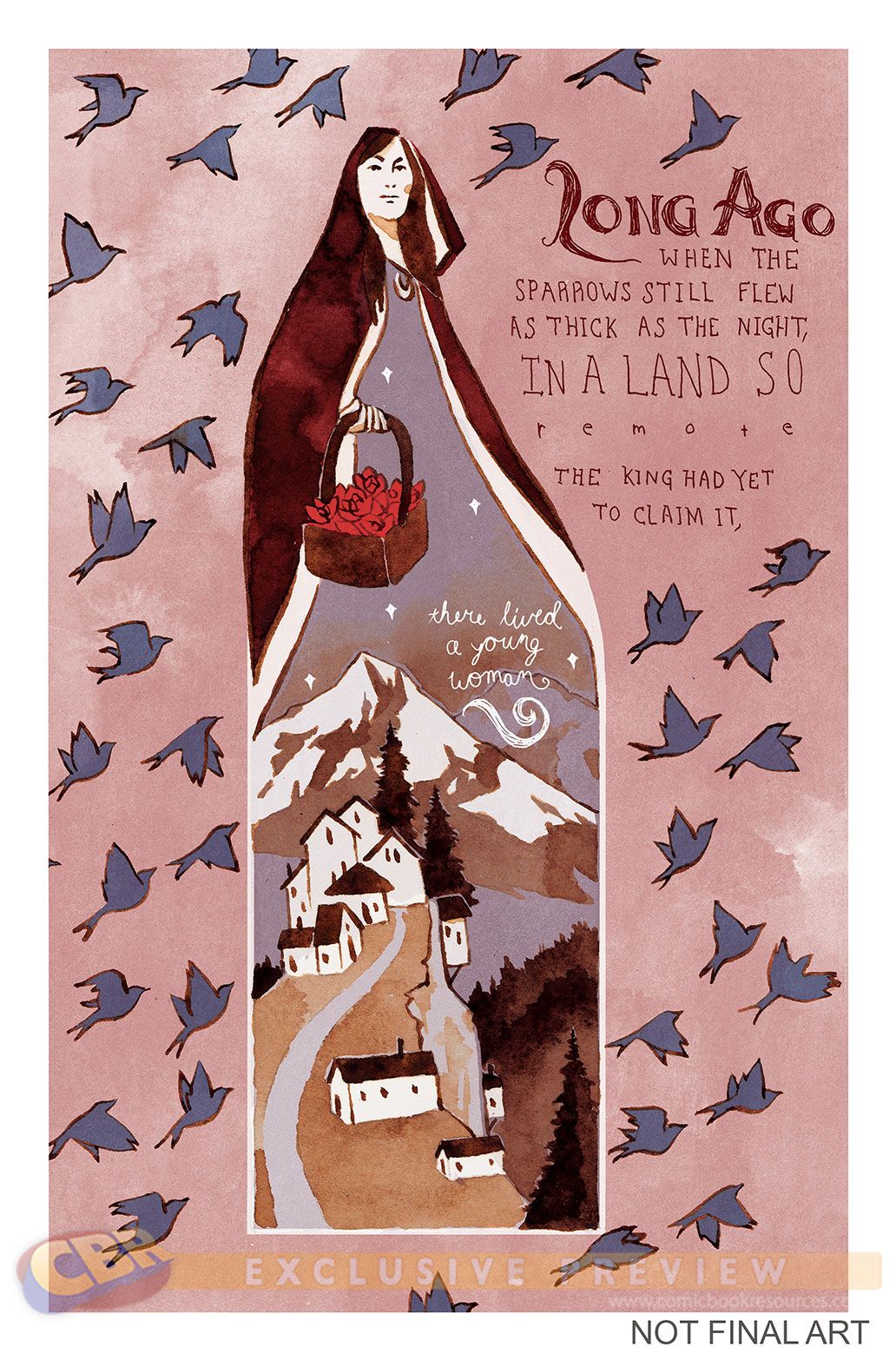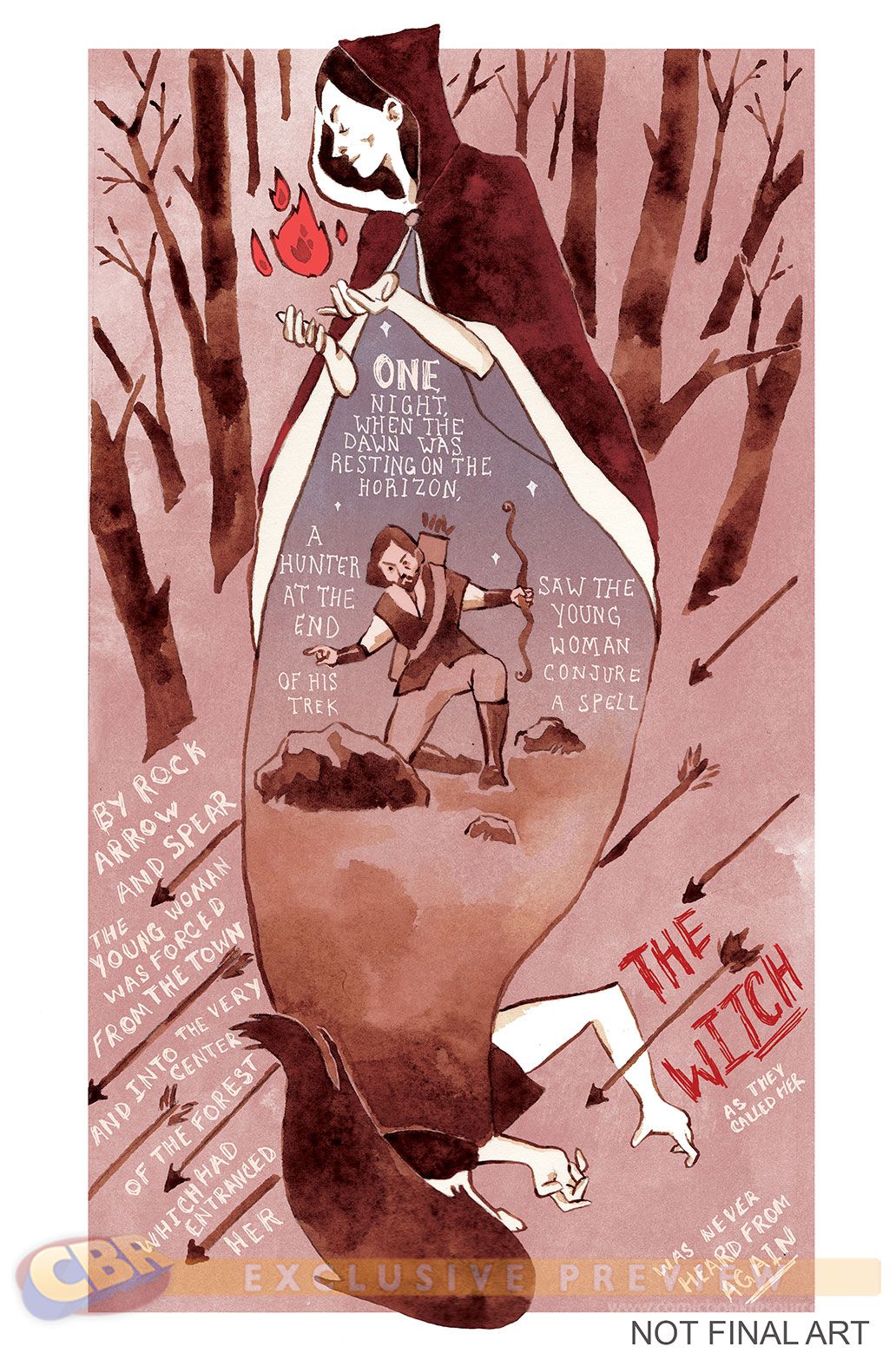It's time to polish the cauldrons and dust off the pointy hats, because the witches are taking center stage in Archaia's next round of "The Storyteller" offerings. Kicking off on Sept. 17, "Jim Henson's The Storyteller: Witches" will consist of four issues each written and drawn by a different creative team, starting with S.M. Vidaurri of "Iron: Or, The War After" fame.
"The Storyteller" was an anthology series from 1988 that featured a combination of live action and puppet performances. John Hurt voiced the title tale-teller in the original nine episode run. A spinoff called "The Storyteller: Greek Myths" ran for four episodes in 1990. Since then, Archaia has transformed the property into a line of comics and graphic novels inspired by Henson's limitless creativity. This time around, The Storyteller will regale readers with tales of mysterious women of legend each with their own mystical abilities.
For his part, Vidaurri decided to pair up two classic myths into his yarn called "The Magic Swan Goose and the Lord of the Forest," which finds a young woman meeting the aforementioned Lord while on a mission to save her brother from a wicked witch. CBR News spoke with Vidaurri about the genesis of his story, the enduring legacy of Jim Henson and why witches continue to make for such great characters.
CBR News: What was your first reaction when you heard about this "Jim Henson's The Storyteller: Witches" book? Did ideas start flowing right away?
S.M. Vidaurri: Delight! That was first. Then my concern was coming up with a story that would fit in the "Storyteller" world. Between the TV show through the first book, there's a lot to cover and I wanted to make sure my idea would be unique, but still fit in that world -- and also be really fun to paint.
Were there more parameters for the anthology stories other than the subject at hand -- namely, witches?
Naturally, each story had to involve The Storyteller in some way. But other than that, the main concern was just coming up with a good story.
What can you tell us about the origins of your story, "The Magic Swan Goose and the Lord of the Forest?"
Well it's kind of a mix of two folk tales. Without giving too much away, "The Magic Swan Goose" is a story about a goose that steals a princess's younger brother and she has to venture through the forest to get him back. "The Lord of the Forest," on the other hand, is a mish-mash of a bunch of different folk characters. He's basically a spirit embodiment of the forest, and he's simultaneously as wild and calm as nature can be. He was really fun to paint, and also the biggest challenge due to his armor. The next time I propose a character to be in full plate mail, I hope someone will remind me of this comic. Though it was so fun, I will probably just do it again anyway.
Your issue features a princess trying to save her brother. What can you tell us about the young woman and how she handles these fantastical situations?
Well, the princess was really fun to write because she's trying to figure out the right thing to do. She's navigating all of this magic and a giant wild forest she's only ever been at the edge of. The hardest part for her is to try to figure out who is actually trying to help her. I thought a lot about the line in Tolkien where Frodo says that an enemy "would look fairer, and feel fouler." Frodo doesn't really have much to go on, just his gut, which is a really scary place to be when the consequences can be your life. So I tried to make the princess's dilemma feel difficult to navigate.
We've talked about the princess and the lord, but what can you tell us about your witch?
The witch, like the lord of the forest, throws offthe princess because she doesn't know whether or not she can trust her. The witch has a reason to hold a grudge against the people of the kingdom and it's up to the princess to figure out what the witch is really after. In a lot of old folktales I was looking at I really enjoyed how playful yet deadly all of the witch's spells were. Often a witchwould turn you into a berry, but then a bird would come along andeat you. And while it's a pretty innocent spell, it's kind of horrifying in its own way. I quite enjoyed that aspect to it.
What's your process like when doing the writing and art for a story like this? Do you sketch while you outline, or is your process completely different?
I made a rough outline, and then did sketches based on that, and then from those sketches I wrote a final script, and from the final script I made final drawings. It's a back and forth, that way you don't get too far ahead of yourself and realize you just wrote a 30 page opening sequence in a 22 page book.
What do you think it is about witches that continues to capture the imagination after many centuries of lore?
What makes witches fascinating to me is that people used to actually believe in them. There was anti-witch legislation. People died. That is completely different from other fantasy creatures, like Orcs or Goblins, Werewolves and Vampires. No one was ever in doubt as to whether someone was an Orc, yet people were actually put on trial for being witches. I think that's what makes witches feel more plausible to us, because for a time, they were a very real fear in the public consciousness.
How did Jim Henson's work inspire you as a writer and artist over the years?
Oh, he was omnipresent. There were "Labyrinth" and "Dark Crystal" posters in my house, and "The Muppet Christmas Carol" was a year round staple and we sat around and watched "The Muppet Show." My sister Tabitha actually went to a Jim Henson class when she was younger and we used what she learned to make little stop motion claymation movies. So yeah, Henson was big in our house.
Have you seen any of the other anthology entries yet or talked to the other creators about what they're working on?
I have only seen the covers, so I'm as excited as everyone else. They all look phenomenal though, and I'm really flattered to be on such a great list of creators.
S.M. Vidaurri kicks off "Jim Henson's The Storyteller: Witches" with the first issue on Sept. 17.

